Why are cows rampaging around supermarkets? Because milk prices are at their lowest for more than a decade. With farmers haemorrhaging cash, and no sign of a recovery as winter – when costs are at their highest – approaches, desperation has set in.
How low is low? The farmgate price has fallen to 23.5ppl, but in the open market spot prices are as low as 19ppl. On the other hand, Tesco, Sainsbury’s, Waitrose, M&S, and Booths are all paying more than 30ppl.
So why are farmers targeting supermarkets? Farmers blame retailers because of the milk price war, which has reduced the amount of money in the supply chain by millions over the year. But retailers are also an easy target – it’s impossible to hold “global forces” to task for the situation. And there’s also the fact that picketing the retailers works. It worked in 2012, at the time of SOS Dairy, and it has worked again now.
Are the mults to blame for the crisis?
Yes and no. The global demand collapse and oversupply play a significant part, but retailers have stripped millions out of the supply chain over the years via the price war. The fact they are (in part) to blame can be seen from recent farmer protests and retailers’ response: they coughed up more money, which then gets back to farmers. They are part of the solution, ergo, they must be part of the problem. Also, retailers have devalued milk in the consumer’s eyes. The price war makes it very hard to increase store prices.
How come this wasn’t sorted after the SOS Dairy protests in 2012? A different set of circumstances are in play now. In 2012 very low prices coincided with dreadful weather conditions and extremely high costs. The situation blew over mainly because farmgate prices soared to record highs in 2013 but much of the profits went on recouping losses from the previous year.
Why have they crashed again? Five main reasons: 1) Demand. China has significantly reduced its consumption of dairy products. 2) Politics. Russia has banned dairy products from Europe and other nations in a tit-for-tat over sanctions imposed as a result of the war in Ukraine. 3) Good supply. High milk prices in 2013, twinned with ideal weather conditions in nearly all major milk-producing states of the world, have led to a glut. Farmers have produced more milk than the market can comfortably consume. The ending of EU milk quotas in April also encouraged higher supply across Europe. 4) Currency. The strong pound relative to the euro is a boon for importers of products like butter and cheese. And finally…
What about the retail price war? Retailers say there’s no link between retail prices and farmgate prices and it’s a fair point: when farmers were in clover in 2013/14, supermarkets didn’t increase prices. But it’s not easy for farmers to see milk at rock-bottom prices on supermarket shelves. Many argue if there was more money in the supply chain, more money would get back to farmers.
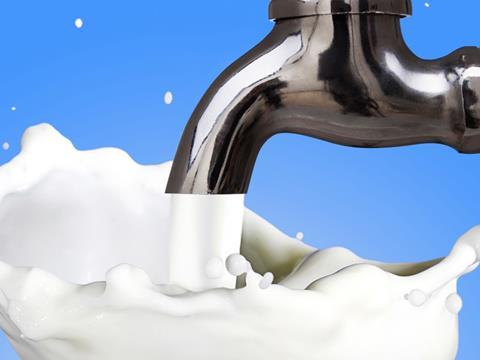
Are sustainable dairy groups for fresh milk the way forward? They’re great for farmers who are lucky enough to be in the club. Hence they’re known as the ‘haves’ or ‘princes’. But they’re also divisive, and not just if you’re supplying the wrong retailer as, historically, these deals mostly applied to liquid milk arrangements. However, retailers are making moves to expand the scope of their groups, with Tesco paying more farmers supplying milk for its own-label cheese using a cost of production price.
So a win-win? Not exactly. The sheer costs, and the illogicality of cost of production models, which Tesco and Sainsbury’s rely on, are not sustainable.
Tesco, for example, is doing everything it can to cut costs and increase efficiency (which shareholders expect), yet its milk sourcing model rewards farmers for increasing their costs and being as inefficient as possible – the higher their production costs, the higher the milk price they get.This year Tesco will spend around £80m more on milk than it probably needed to. Not surprisingly the TSDG is under review.
If some retailers are committed to paying more, does this not put other retailers at a huge advantage right now? It does, though there are still agreements in place, particularly for liquid milk, as security of supply is too important to be able to spot buy. And as a result of pressure from farmers, a number of retailers who don’t have SDGs have increased the price they pay their farmers.
How can milk be cheaper than water?
Milk is not a loss leader for supermarkets (or not like it was in the 1990s, when they were looking to drive the milkmen out of business). But neither is it now a big profit centre, like water, or as it was until the recession. As a KVI, it’s now a major signal of value. While Tesco, Sainsbury’s and others looked to support dairy farmers through SDGs, the discounters used the price gap to undercut them. With their success, the major mults had no alternative but to follow suit – and they’ve had to do so in some cases while shouldering greater cost.
Do farmers and processors bear any responsibility? Yes. They have to accept part of the blame. A few years ago the milk processors engaged in fierce competition to win retailer business. Margins were given away that have proved impossible to recover. In addition, farmers continue to produce more milk than the market can comfortably absorb. Indeed, UK farmers have led the way in upping production. World production has increased by 4.4% yoy. UK farmers increased production by 10.2%. A lot of this has had to be turned into SMP, at very low prices.
What role has the EU played in this whole mess? The ending of the milk quota regime on 31 March played a big part in the over production of milk, but even if it were still in force now there would still be a crisis. That said many feel Europe has been sluggish in its response. The European Commission this week announced a €500m emergency relief package for farmers, but this has been slammed as too little too late by farming unions. The funds are also not exclusively for dairy farmers but will be distributed to producers across a number of agricultural sectors.
Should the government support dairy farmers? It’s difficult. Milk is a vital part of our nation’s diet, so for nutritional reasons supporting the dairy industry should be a priority. The industry also employs thousands of people and dairy farming is generally regarded as the engine room of the countryside. There are far more allied industries – such as feed manufacture, machinery dealerships, colleges, veterinary practices and the like – reliant on dairy farming than, say, on beef and sheep. But neither the UK nor the EU is allowed to interfere in the price of milk, with tariffs and quotas gradually winding down in a global trade agreement dating back to 1992.
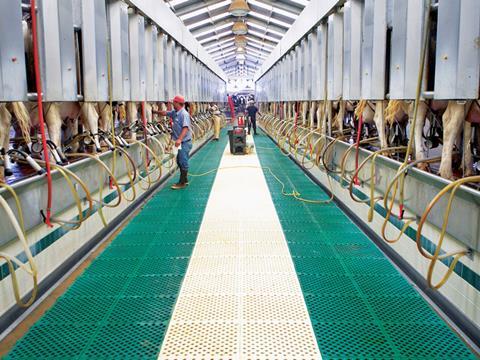
The government must be able to do something though? It is helping by promoting better labelling practices, reducing red tape and running a trade mission to China later in the year to try to sell more cheese. But many worry it’s all lipservice. Last year, exports of cheese to China would fill the equivalent of around 20 transit vans with space for ample luggage. The government could give extra help by supporting moves to raise the intervention price, by clarifying how and what AHDB can spend levy money on to promote dairy products, by shaking up its public procurement, and by doing more on exports. The UK spends very little on generic advertising, promoting health benefits in particular. And as a consumer survey in The Dairymen reveals, there is a risk that public perception that milk and other dairy products are good for you is in decline.
Would farmers be better off if the UK were self-sufficient in dairy? We’ll never be self-sufficient in dairy products, we love our Continental cheeses and yoghurts too much. Self-sufficiency is an unachievable obsession. The focus should be a) encouraging consumers to value – and thus spend more on – all dairy products; and b) increasing exports. Much progress has been made on this front already, but many barriers to exporting remain, not least the strength of the pound against the euro right now, and the higher cost of land.
What else can be done to support supermarkets?
Retailers and consumers have a range of options to support farmers other than through dedicated pools. Some, like Asda, are committed to working with a dairy co-operative (Arla). Asda has also just added new signage in store and to its dairy products to encourage shoppers to support farmers by buying Arla-made products. Morrisons are offering a new ‘milk for farmers’ brand, paying the farmers 10p per litre more – though the jury is out on whether shoppers will pay the premium.
Will this all blow over in a year? Yes and no. The immediate global price crisis will pass and prices will improve at some point, but the dairy supply chain needs more money coming in at the top (ie at retailer level) so it can filter through to the farmers at the bottom in a fair and equitable way. One way for this to happen is by stopping the milk price war, though this is never going to happen, and anyway, the fact there’s a price war is increasing consumption, which has to be a good thing with so much milk sloshing about in the system as that should correct the supply/demand imbalance more quickly.
Will we ever see a recovery in demand from China? Eventually. But it’s a long way off. Dairy companies are being optimistic, but it will take a number of factors – a return to growth for its economy, plus a downturn in its domestic milk production and a desire by the Chinese to embrace more dairy in their diets.
The West had high hopes that the relaxation of China’s ‘one child’ policy would bear dividends through increased infant formula sales, but that’s another pot of gold at the rainbow’s end.
There were mixed messages coming out of China about when it might start to buy in bulk again prior to the recent financial meltdown – though other Far Eastern countries may increase demand. India is a huge producer and consumer of dairy.
Meanwhile, in Europe, there is currently no sign that Russia will start accepting European dairy products anytime soon. That market may be lost for many, many years to come.
Low prices will also result in culling through the winter in Europe and also in New Zealand. However, it would take a significant adverse weather event to bring about a fast rebalance. El Niño anyone?









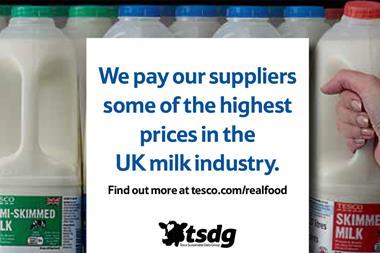
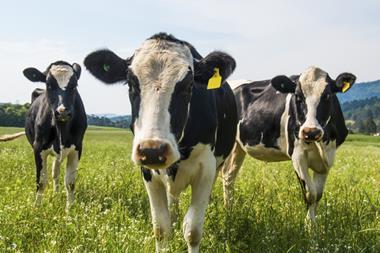
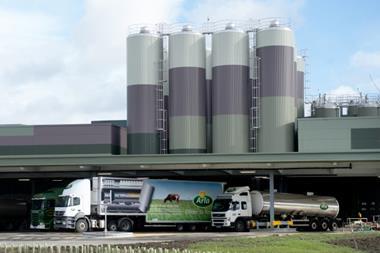
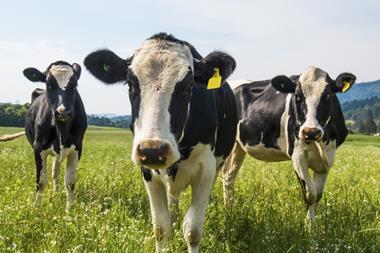






No comments yet